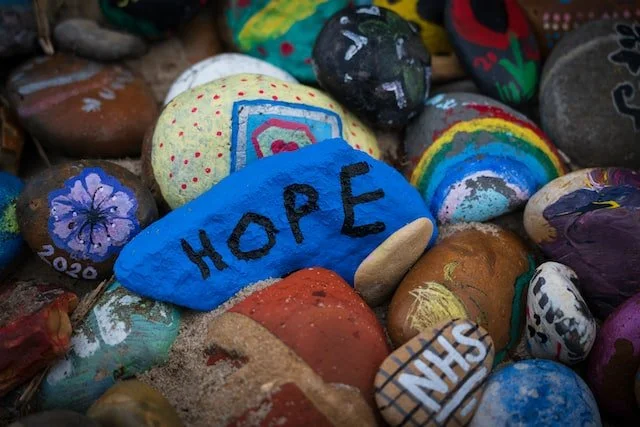Image: defenceimages, Flickr
Introduction
Islam in church, the sacred space and interfaith is a divisive topic. By opening up the discussion here, Mahabba Network is seeking to help Christians to pause, consider the facts and pray before commenting.
We trust that as you read you will weigh Scripture and invite the Holy Spirit to bring you discernment in the issues.
Mahabba seeks to make space for those who are more interfaith and ecumenical-minded as well as the evangelically-minded who want to see Muslims discipled to Jesus.
Mahabba’s vision is to see Jesus unveiled to Muslims, but we believe that dialogue and understanding of ‘the other’ are important on that journey.
The two are not mutually-exclusive, but it does mean that there is tension in holding both together.
What is church?
How do we think about church space, nevermind Islam in church: is it simply a building that homes us while we join together for communal worship, so that we may even meet in a school and call it ‘church’?
To what extent do our churches belong to the community as a whole – whether they’re Christians or not – so that they may visit and learn about our Christian history?
Is the church the house of God in the sense that we all may enter but only the sanctified may express themselves?
Qur’an and adhan in church
This January saw two events where Islamic presentations took place in a church space, causing uproar and raising some of these questions again.
First there was the Qur'an reading at an Epiphany service in Glasgow and then there was the adhan at Gloucester Cathedral.
[See below for more on the Qur'an reading in Glasgow from the Pfander Centre]
There has also been controversy surrounding Rev Giles Goddars and St John’s Waterloo where a progressive Muslim group was invited to use the St John’s space.
Fed up of religious people
On January 14, I visited the launch of an art exhibition at Gloucester Cathedral by a self-proclaimed atheist artist.
He had painted 37 huge portraits depicting people of different faiths, explaining that he had become intolerant of ‘religious people’ and this project was his way of connecting with people of different persuasions: Buddhist, Christian, Jewish, Muslim, Rastafarian, Wiccan and others, so that he may understand them better.
Fire-eating vicar and the pagan rock band
I don’t usually attend these kinds of events, but had a personal stake in this one. My friend, a Muslim, was the subject of one of the portraits.
The launch promised a variety of demonstrations by different religions, and of course, there was food.
The portraits were placed around the cloister walls and the launch events took place in the Chapter House, a side room off the cloister area.
I only stayed long enough to hear the Jewish Klezmer band, the Buddhist meditation and the Muslim call to prayer, adhan. I missed out on the fire-eating vicar and the pagan rock band.
Cathedral attracts criticism
Sadly, neither I nor my Muslim friend were surprised the next week when local papers reported that the cathedral had removed a video clip of the adhan from its Facebook page because it had attracted abuse.
The cathedral attracted further criticism and the issue then made the front pages, was reported on regional BBC TV news and went national.
Constructive approaches to different faiths
Interfaith contact often causes debate or accusations of syncretism. But the Gloucester controversy differs from the Scottish furore in ways that might help us think about constructive approaches to different faiths:
- The Gloucester event did not take place in the usual Christian worship space but in an adjacent room which is also available for hire to the general public. In contrast, the Glasgow cathedral event had the Qur'an reading as part of the worship service
- The Muslim call to prayer was one religious expression among many, including Buddhists, Wiccans, Rastafaris and others so that people could learn, not only about similarities between faiths, but the fundamental differences between them
- The call to prayer was made in Arabic and translated afterwards in English so that everyone could understand what was being said
The event was not part of regular Christian worship, but an open educational or artistic event hosted on the cathedral grounds
Media-consuming public
Rather than revealing something about the state of Christendom in Britain, it says something about us as a media-consuming public when the Muslim call to prayer is singled out from a list of other religious expressions to make headlines.
I was certainly glad that I had a long established relationship with this same Muslim friend in Gloucester so that we could continue meeting the next Saturday, where we reflected on the comfort promised to us in Psalm 121.
A different perspective
Our friends at the Pfander Centre had an interesting perspective on the reading of the Qur'an in church.
Here are a few points, and do read their blog in full.
- Christians should e encouraged to sit down with Muslims and study the Qur’an and the Bible together
- If we believe the Bible to be God’s word, why is the Qur’an given the same status as the Bible, when it teaches the opposite of core Christian doctrine?
- Ayahs 35-36, which were read out, are direct denouncements of Jesus' divinity and sonship, in a gathering where people were worshiping him as the unique Son of God
Your turn
Do you want to find out more about Islam and Muslims – request someone from Mahabba to come and speak at your church.
The author
Georgina is part of the Network Team and is involved with her local Mahabba prayer group. She also wrote all the entries for our recent Mini-Lovefast campaign during Eid al-Adha! (Find out more about who’s who in Mahabba.)
Community
We welcome comments and discussion, but please read our Comments Policy before posting a reply in the comments section below.






